The Colorado Indian Market & Southwestern Art Festival
The Beauty of Colorado Indian Culture and the injustices of Colorado History
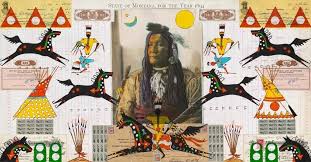
January 30, 2023
I found out about the Colorado Indian Market & Southwestern Art Festival because I saw an ad for it at a bus stop.
A couple days before I went, I tried to think and draw on my 4th grade year when I had been taught about all the detailed history of Colorado. I could see facts about the Ute and Arapaho in my mind, I could see the image, but when I really tried to stretch my mind into remembering any real knowledge, I found there was nothing retained. It turns out I was taught all that history too young to be told it’s gruesome details. In turn trying to remember anything real I knew about Native Colorado history is like trying to get historical facts out of Disneyland.
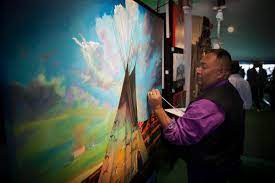
Native Americans have lived in Colorado for thousands of years. In 1864 the Arapaho and Cheyenne people were “relocated” out of Colorado after the Sand Creek Massacre, 159 years ago. The Colorado Indian Market was first held in 1982, only 41 years ago.
This year the 41st annual Colorado Indian Market & Southwestern Art Festival was held in a massive ballroom at the Colorado Convention Center. Upon first entering the ballroom, I became quickly and wonderfully overwhelmed by the rows and rows of booths that were filled with art of intense desert colors and beautiful people walking around in their ancient ceremonial outfits.
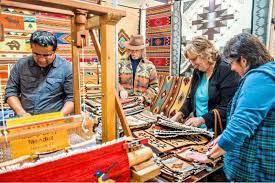
I spent good hours looking through all the paintings and blankets and pottery and clothing. (Wanting to buy all of it.) In the middle of the market there was a massive tipi. I do understand that most people have seen a tipi in their lives of course, but have most people ever really seen a real tipi? With tanned fur laying on the inside and real feather headdresses hanging on the front? I know I hadn’t before.
As central as the tipi was, by far the most powerful thing I saw that day was the dancing. A man and his daughter got onto a stage (that was behind the tipi) and introduced themselves as the Lakota Body Care Dancers. The daughter wore a jingle dress and her father wore his ceremonial outfit, which he said he had earned each piece of.
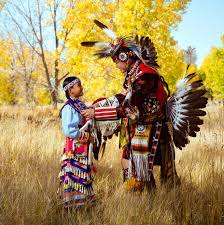
Before each dance the father would pause and say, “see if you can figure out the story.” They did about 3 or 4 dances, each movement having strength while being gracefully subtle.
As the father and daughter both danced I felt something sad build inside of me. It wasn’t that I was about to cry but I was filled suddenly by a strong and sad feeling which welled into my head. It was because I clearly understood and saw, like many others have before me, how these dances are meant to be done on the earth, the dirt. I could see the way the dances represent and are connected to the land, how the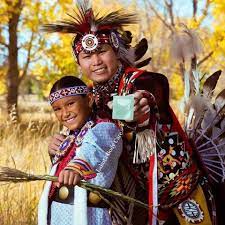 shouting and graceful subtle steps were at one time always done on the earth in the places that are now covered by cities and suburbs. For thousands of years the American Indian culture was the only thing on this continent. In watching the father and daughter dance I understood a piece of the magnitude of what has been taken away from Native Americans and from the land of Colorado and from North America. I could see that perspective in a sense far deeper than my 4th grade history lessons had given me. And so I felt an intense sadness watching the beauty of their dancing.
shouting and graceful subtle steps were at one time always done on the earth in the places that are now covered by cities and suburbs. For thousands of years the American Indian culture was the only thing on this continent. In watching the father and daughter dance I understood a piece of the magnitude of what has been taken away from Native Americans and from the land of Colorado and from North America. I could see that perspective in a sense far deeper than my 4th grade history lessons had given me. And so I felt an intense sadness watching the beauty of their dancing.
The primary tribes of Colorado were the Southern Utes, the Mountain Utes, the Arapaho, the Apache, the Cheyenne and the Comanche. Today only the Southern Ute and Mountain Ute tribes still have reservations in Colorado.
There is a complicated history concerning the later relations between white settlers and Native Americans. Specifically concentrating on the history of how the land was taken, I assume you may very well have also forgotten everything about it after the 4th grade. Here’s what you need to remember.
- In June 1858, gold was discovered in Colorado. Over 100,000 gold-seekers came to CO trespassing on Arapaho lands
- Treaty of Fort Wise offered to Cheyenne and Arapaho a small reservation along the Arkansas River between northern New Mexico and Sand Creek.
- Tribes would be required to give up their nomadic lifestyle and become farmers
- The Colorado War (1863-1865) was a conflict fought between the United States and Native American tribes

- In November 1864, the Colorado Volunteers, under the leadership of Colonel John Chivington, attacked the Cheyenne along Sand Creek.
- Between 165 and 200 Cheyenne and Arapaho were killed and another 200 wounded. Two-thirds being women, children, and the elderly.
- Chivington was investigated by Congress and condemned for genocidal brutality
- The Cheyenne, Arapaho, Kiowa, and Comanche were relocated from Colorado to Oklahoma. The Utes were the sole remaining tribe in Colorado
- With no further native claims Colorado was open to white settlement. Denver grew to 35,000 people in 1880 and 106,000 in 1890
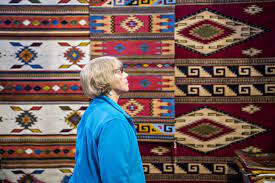
Throughout the 1950’s and 60’s the U.S government pushed to help merge Native Americans into the urban areas of Colorado and nowadays a little over 1% of Denver’s population is Native American. (Around 8,000 people)
Now it is 2023 and the choices of my white settler ancestors are too far in the past for me to have had any direct connection with their choices and the massacres and the ‘relocations’. But I can trace my genealogy to the Mayflower compact. There’s no way of knowing how big the effect my ancestors have had in impacting lives throughout American history. So in some ways I am connected to the choices of my white settler ancestors.
Knowing this gives me a historical understanding of this country and my personal standing as a white American girl. But mostly it gives me the understanding that there is no way to change the past, but that its not an excuse to fully comply with the effects of it today.
Below I’ve compiled a list of links to sites for museums and shops, powwows and markets, monuments and national parks which you may not have noticed before. So maybe if you were moved in even a small sense of the way I have been, you will go check them out and explore the beauty of the Native American culture and history.
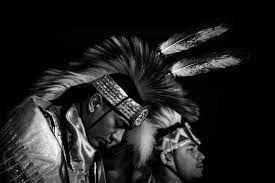
Museums and Monuments:
https://www.colorado.com/history-museums/ute-indian-museum
https://www.colorado.com/articles/hidden-colorado-gem-hovenweep-national-monument
https://www.colorado.com/historic-sitelandmark/sand-creek-massacre-national-historic-site
https://www.plainsconservationcenter.org/
https://www.colorado.com/museums/southern-ute-museum
Powwows:
https://www.facebook.com/SaguachePowwow
https://www.denver.org/things-to-do/spring-summer/festivals-events/march-powwow/
Gateway website into exploring the history and present lives of the Native Americans in Colorado– https://www.ala.org/aboutala/offices/denver-colorado-tribes
Informational website which the Native American names for Colorado animals, the Tribal boundaries, the languages of different tribes and more– http://www.native-languages.org/colorado.htm
This website posts the updates and information about the the Colorado government and the Colorado Tribes relations with each other and news about current events- https://ccia.colorado.gov/
A link to the Native American Rights Fund, which you can donate to and support the voting rights, land rights, human rights and representation of Native Americans all over the country- https://narf.org/?gf_protect_submission=1
The Southern Ute reservation’s website, it includes events, lifestyle and any other information you could want-https://www.southernute-nsn.gov/
The Mountain Ute Tribe’s reservation website with similar information as the link above-https://www.utemountainutetribe.com/index.html
Mesa Verde National Park- https://www.colorado.com/articles/mesa-verde-national-park-itinerary



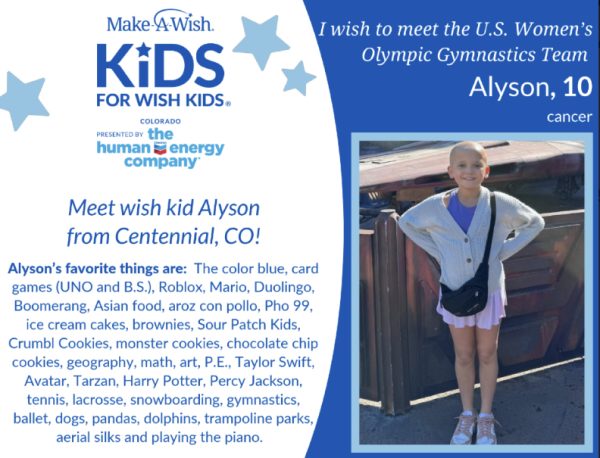

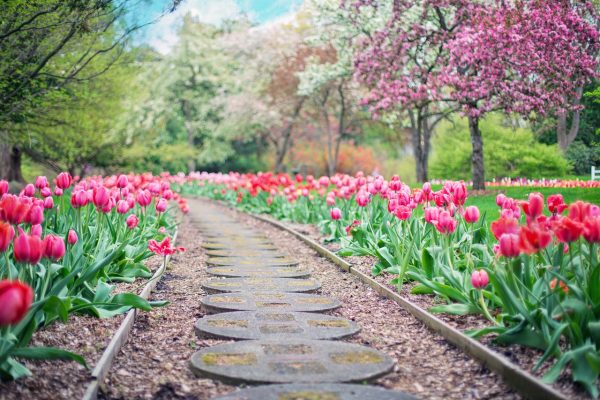



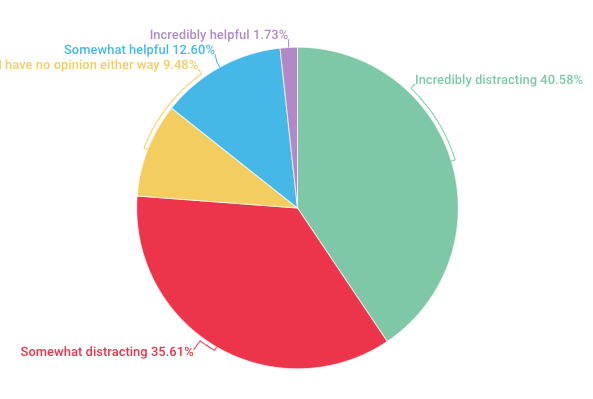


Mae Bryant • Jan 30, 2023 at 4:03 pm
Ok ok ?